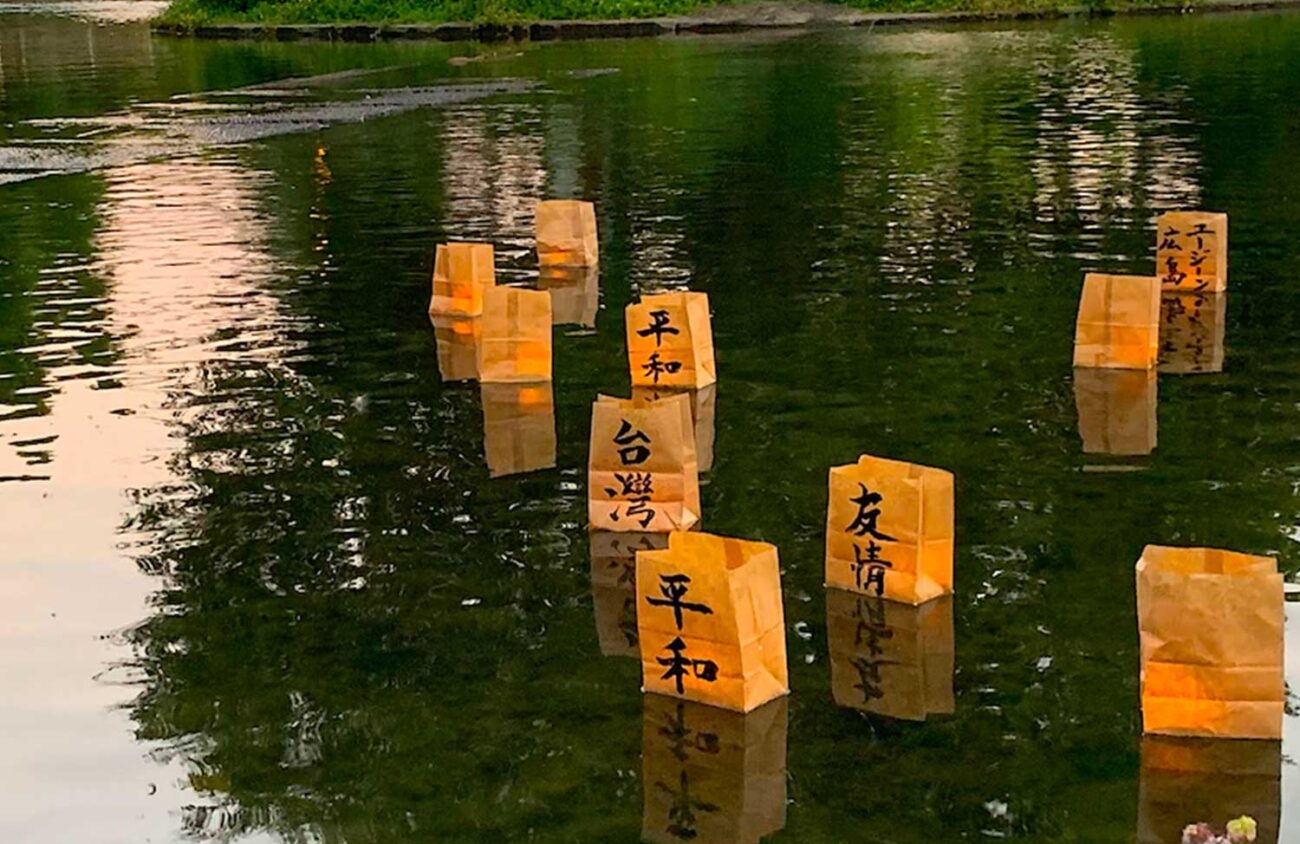At the Nobel Peace Park inside Alton Baker Park, there is a persimmon tree. In 2019, the seed of a hibaku jumoku, a tree that survived the Hiroshima bomb in 1945, was planted as a symbol of hope and peace. Green Legacy Hiroshima spreads the seeds and saplings of hibaku jumoku worldwide. More than 50 trees were planted in Oregon, the most out of any state in the U.S.
This year marks the 80th year since World War II ended. It also marks the 80th year after the last and only nuclear bombs dropped and took away people’s lives — an estimated 120,000 people died and many more survived with severe health conditions — in Hiroshima on August 6 and Nagasaki on August 9.
On August 6, the Asian American Council of Oregon hosts its annual Hiroshima-Nagasaki Commemoration at the Peace Park Pavilion. In Corvallis, you can attend the commemoration on August 6 as well as attend a Family Peace Day for all ages on August 9 and learn more in the Hiroshima Nagasaki exhibit at the Corvallis Museum until August 10.
Since the war ended, Japan and the U.S. have formed one of the strongest relationships in the world in politics, trade and military bases over the years, says Mark Unno, professor at University of Oregon. He says that it is important to take positive actions for “絆 (kizuna),” meaning “bond” in Japanese, and to further develop and celebrate the friendship.
Unno and volunteers such as Robert Watada, whose son Ehren Watada is known for his resistance to joining the war in Iraq, prepare for the annual Hiroshima-Nagasaki Commemoration on August 6. “It’s a community event,” Unno says, noting that he’s met people who will come to share and express opposing nuclear weapons, celebrate friendship between Japan and the U.S., or simply enjoy the program.
A group of students from Willamette High School, Sheldon High School and Yujin Gakuen Japanese immersion school, will be singing in a choir. Students will sing “Hana wa saku,” meaning “The Flower Blooms” by Kanno Yoko and Iwai Shunji. The song was originally composed in response to the 2011 Tohoku earthquake in Japan as a support song, and is translated in English by Roger Pulvers. It sings of hope even after disastrous events.
Watada says each program symbolizes things to honor the commemoration. Eugene Taiko will perform at the event as well. Taiko is commonly performed at summer festivals in Japan as many Japanese return to their home towns to visit family and pay their respects to their ancestors.
Everyone is welcome to join in Obon dance, a Japanese summer festival dance where you follow the lead in a circle and dance all together. The event will conclude with a lanterns floating ceremony or toro nagashi, where people send off lanterns with hand-written words. Lanterns from previous years read, “愛 i (love)”, “平和 he-i-wa (peace)”, “調和 tyo-wa (harmony)” and more to symbolize hope for a better world and world peace.
“This is not only about Japan,” Unno says. From 1945 to 2021, there were 2,059 nuclear bomb explosions, including 1,030 by the U.S.
Areas such as in Hanford, Washington and Bikini Atoll are still not accessible due to nuclear radiation. Watada points out that atomic bombs today are 100 times more powerful than the ones dropped in Hiroshima and Nagasaki. This year, the memorial is recognizing Nihon Hidankyo, a grassroots movement of atomic bomb survivors, which received the Nobel Peace Prize in 2024 for “its efforts to achieve a world free of nuclear weapons and for demonstrating through witness testimony that nuclear weapons must never be used again.”
Hideko Tamamura Snider is a survivor of the bomb and she now lives in Medford. Snider has been attending the commemoration in Eugene over the years. This summer, she is heading to Hiroshima as she was invited by Nihon Hidankyo to the commemoration there. Snider has written a book, One Sunny Day, in which she shares her childhood memories before, during and after the bomb in Hiroshima when she was 10 years old.
As a Japanese person with the memory of Hiroshima and the bomb now living in the U.S., Snider began to speak out for peace and against nuclear weapons. She is now 91 years old, and many survivors are also approaching that age or passed away. As Unno recalls, remembering the past and bringing hope for the future is what we can do, and people are gathering and sharing the messages as long as they can.
“Let us not forget,” Snider says.
The Hiroshima-Nagasaki Commemoration is hosted by Asian American Council of Oregon, 7 pm to 8:30 pm, Wednesday, August 6 at the Peace Park Pavilion in Alton Baker Park. In Corvallis, the Hiroshima Nagasaki Commemoration and Candlelight Vigil is 6:30 pm to dusk, Wednesday, August 6 at Howland Plaza, 200 SW 1st Street. An all-ages Family Peace Day is 1 pm to 3 pm, Saturday, August 9 at the Corvallis Museum and a Hiroshima Nagasaki exhibit is up until August 10 at the Corvallis Museum, 411 Southwest 2nd Street, Corvallis.
